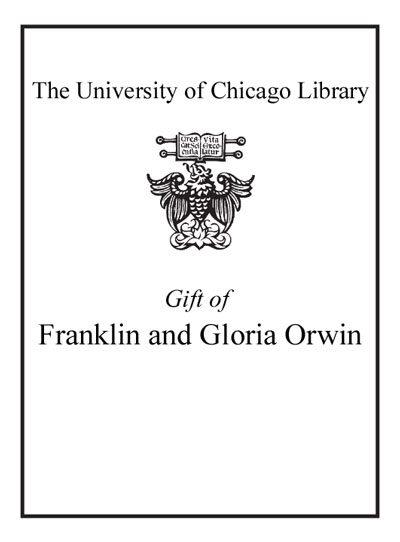Review by Choice Review
First published in 1994 (CH, Jul'94, 31-5782), this title has established itself as one of the main references in the field, through well-written, in-depth articles on critics, schools, periods, and critical innovations of specific countries and ethnic traditions. This edition maintains the format, scope, structure, and quality of its predecessor, while adding 45 new entries on topics such as "Globalization," "Genetic Criticism," and "Visual Culture." Written by an international body of scholars, the 241 alphabetically arranged essays are duly cross-referenced, signed, and provide selective bibliographies. Entries have been revised to reflect current interest, and previously covered figures have been folded into larger essays to make room for new or rediscovered critics. Bourdieu, Hall, and Sedgwick are among the newcomers, but Richards, Rorty, and Sontag are no longer treated individually. While some changes are debatable, the guide remains an indispensable bargain for any library covering literary theory. Competitors are Encyclopedia of Critics and Literary Criticism, ed. by Chris Murray (2v., CH, May'00, 37-4835), and The Continuum Encyclopedia of Modern Criticism and Theory, ed. by Julian Wolfreys et al. (CH, Dec'02, 40-1891), but Johns Hopkins has better currency. It contains name and subject indexes, as well as lists of entries and contributors. ^BSumming Up: Highly recommended. Upper-division undergraduates and higher. E. S. Hierl University of Chicago
Copyright American Library Association, used with permission.
Review by Booklist Review
With coverage ranging from Plato and Aristotle to Richard Rorty and Edward Said, this work is an overview of major landmarks of criticism from classical antiquity to the present day. Included, in addition to literary critics, are theorists whose affiliation or discipline is not primarily literary studies: philosophers, political theorists, anthropologists, psychologists, and psychiatrists. For example, an essay on Hegel appears between those on Hazlitt and Heidegger. The editors state that they shortened the entries on twentieth-century critics in an effort to entice the reader into making selective sorties into earlier entries, earlier in the historical sense. In addition to those figures who have affected literary theory and criticism, the work includes important groups, schools, and movements; major national or ethnic schools of criticism; and theoretical innovations of specific countries and historical periods. The 226 entries are arranged alphabetically so that such entries as Caribbean Theory and Criticism, Chicago Critics, Chinese Theory and Criticism, and Chomsky, Noam appear in that order. Entries on Arabic, African, biblical, feminist, gay, Indian, psychoanalytic, and Russian criticism are joined by essays on film theory, cultural studies, hermeneutics, postmodernism, and stylistics. Each contribution is signed. The authors are literary scholars from leading universities throughout the U.S. and Canada with a few from institutions in other countries. Each entry is followed by at least one bibliography; most have two, a primary and a secondary one. Ample cross-references are noted within entries in small-capital letters. Related references appear at the end of each entry. Quotations are signaled by parenthetical page numbers that refer to works in the bibliographies. The appended material includes a list of contributors with academic affiliations, an index of names, and an index of topics. Histories and anthologies of literary theory and criticism abound, but there are few encyclopedic works that treat critics, schools, and movements in a reference format. This more scholarly work complements Gale's Contemporary Literary Critics, which gives biobibliographic information about modern critics but treats no schools or movements. Another recent work, the Encyclopedia of Contemporary Literary Theory: Approaches, Scholars, Terms (Univ. of Toronto, 1993), also emphasizes contemporary themes. The Johns Hopkins Guide is an excellent overview with a wider time frame. Academic libraries with strong literature programs, especially graduate programs, will want to own it. (Reviewed July 1994)
From Booklist, Copyright (c) American Library Association. Used with permission.
Review by Library Journal Review
This self-defensively ``postmodern'' guide provides 226 essay-length overviews of critics, schools, movements, and national and ethnic groups important to the study of literary theory and criticism. The descriptive entries, which include a primary and secondary bibliography and an abundance of cross references that facilitate exploration, are authoritative and well written. The entries in Hugh Holman's Handbook to Literature (Macmillan, 1992. 6th ed.) are both much shorter and more accessible, but individual critics are not included. Magill's Critical Survey of Poetry (Salem Pr., 1992. rev. ed.), on the other hand, gives critical analyses of poets but deals only briefly with terms and concepts. By covering terms and critics, this guide does the work of both sources, filling a niche for scholars and graduate students in literature and related fields.-- Peter Dollard, Alma Coll. Lib., Mich. (c) Copyright 2010. Library Journals LLC, a wholly owned subsidiary of Media Source, Inc. No redistribution permitted.
(c) Copyright Library Journals LLC, a wholly owned subsidiary of Media Source, Inc. No redistribution permitted.
Review by Choice Review
Review by Booklist Review
Review by Library Journal Review

